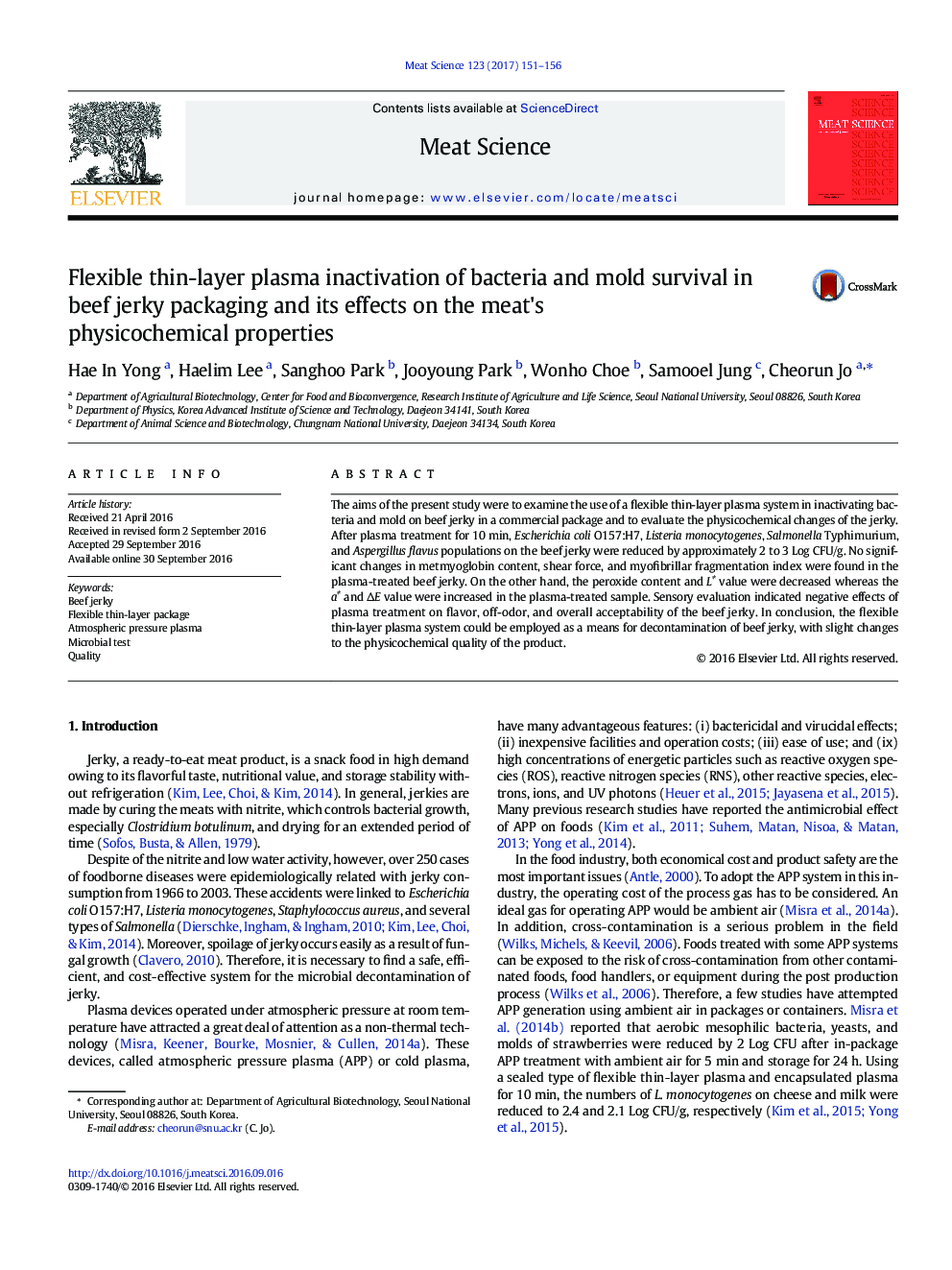| Article ID | Journal | Published Year | Pages | File Type |
|---|---|---|---|---|
| 8503307 | Meat Science | 2017 | 6 Pages |
Abstract
The aims of the present study were to examine the use of a flexible thin-layer plasma system in inactivating bacteria and mold on beef jerky in a commercial package and to evaluate the physicochemical changes of the jerky. After plasma treatment for 10Â min, Escherichia coli O157:H7, Listeria monocytogenes, Salmonella Typhimurium, and Aspergillus flavus populations on the beef jerky were reduced by approximately 2 to 3Â Log CFU/g. No significant changes in metmyoglobin content, shear force, and myofibrillar fragmentation index were found in the plasma-treated beef jerky. On the other hand, the peroxide content and Lâ value were decreased whereas the aâ and ÎE value were increased in the plasma-treated sample. Sensory evaluation indicated negative effects of plasma treatment on flavor, off-odor, and overall acceptability of the beef jerky. In conclusion, the flexible thin-layer plasma system could be employed as a means for decontamination of beef jerky, with slight changes to the physicochemical quality of the product.
Related Topics
Life Sciences
Agricultural and Biological Sciences
Food Science
Authors
Hae In Yong, Haelim Lee, Sanghoo Park, Jooyoung Park, Wonho Choe, Samooel Jung, Cheorun Jo,
